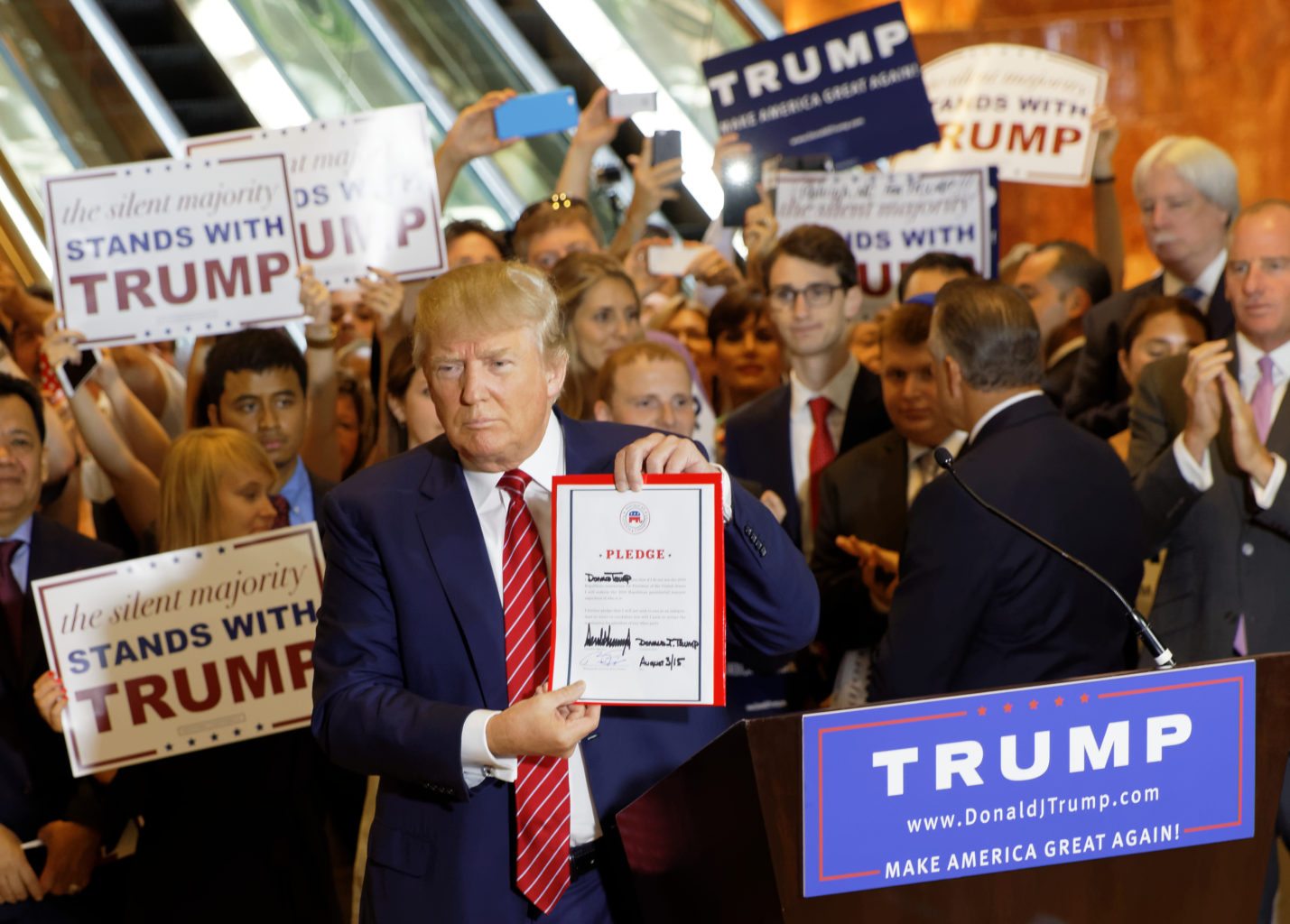100 days of Trumponomics: has President Trump delivered?
The first 100 days of an American presidency are often those most scrutinised – the number is somewhat artificial, but it can be a useful timeframe from which to get a rough handle on the direction of the country, and the health of its various institutions. Perhaps more so than any other president in recent times, the beginning of Donald Trump’s time in office has been watched closely by people around the world. Yet, as a successful businessman, during his presidential campaign he consistently boasted that his handle on the economy would be equally as successful. But has reality matched Trump’s rhetoric?
What he hasn’t done
Initially, it should be observed that Trump has not yet made any substantial economic changes to America. He has not passed any budgets, introduced any tax reforms, nor has he renegotiated any trade deals (he scrapped US participation in the Trans-Pacific Trade Partnership, but this agreement had not yet been ratified). Instead, his focus has been more in the areas of foreign policy, law and order, and healthcare.
it could essentially be a hangover from the Obama administration
In his one-hundred-day action plan, Trump spoke confidently of some of his macroeconomic goals, including growing the US economy by 4% per annum and creating at least 25 million jobs in ten years. The US Bureau of Economic Analysis reported that US GDP grew at a rate of 0.7% in the first quarter of this year, although we should be weary of reading too much into this – it could essentially be a hangover from the Obama administration. Nevertheless, it looks to be a big task for Trump. Last year, GDP growth totalled at just 1.6%, and economists are sceptical of Trump reaching his target given the structural drags on economic expansion (such as an aging population).
Is the Dow Jones a good reference point?
However, we have seen a touch of success on the economic front. In three trading days after Trump took office, the Dow Jones Industrial Average broke through the 20,000 mark for the first time ever probably because investors were expecting Trump to cut corporate taxes and remove tons of business regulations. Indeed, consumer confidence in America is at its highest level since 2000.
But this so-called ‘Trump Bump’ has not yet translated to retail sales or jobs. The US economy had added 98,000 new jobs in March – half of what was predicted – whilst retail sales (which you’d naturally expect to rise with consumer confidence) fell by 0.2%. This is, in part, explicable by Trump’s failure to deliver healthcare reform – the markets are now less confident that Trump will be able to deliver on his other promises, such as a $1 billion investment on infrastructure.
this so-called ‘Trump Bump’ has not yet translated to retail sales or jobs
All the President’s Tweets
Trump has also focused on a doctrine of ‘Buy American, Hire American,’ which has had mixed effects (although it is too early to really judge). For example, the tech sector has expressed worries that this policy will discourage highly-skilled immigrants. More surprisingly however, Trump’s unprecedented willingness to name and shame corporations has served to chasten business a bit, with the president’s angry tweets having an effect on stock. Indeed, Boeing saw its shares drop after Trump shamed it for the cost of Air Force One.
The Trump administration claims it has created new jobs by pressuring corporations to invest in American plants – Ford, ExxonMobil and Intel are all examples of this – but these expansions had all been set in motion before Obama left office. In reality, the president’s relationship with the corporate sector is an interesting one – they love his deregulation, but fear his wrath and his efforts to rollback globalisation. Trump’s voters are pleased with this though, with every angry tweet demonstrating that the president is fighting on their behalf.
Ironically enough, one group that is doing well under Trump is the media – Trump’s adversarial relationship with the press has done wonders for their profit margins. Both The New York Times and the Washington Post have seen their subscriptions soar. It has also proven to be good news for CNN, a network which was not expected to last only a few years ago – it is enjoying a ratings windfall. The same is true of Twitter, whose user numbers had been stagnating before it became a key part of the president’s communication.
The New York Times and the Washington Post have seen their subscriptions soar.
Without doubt, Trump’s first one hundred days in the White House have been interesting to say the least. The self-promoted business guru has given us little to go on regarding economics, but the clashing of his ‘America First’ ideology with the media, combined with his aggressive foreign policy, certainly gives us food for thought when considering how Trump, directly or not, will impact several industries during his tenure.

Comments